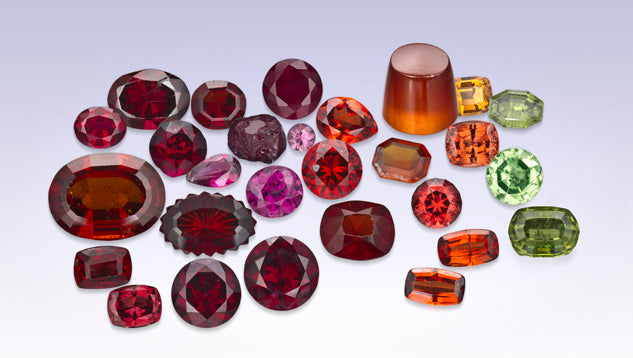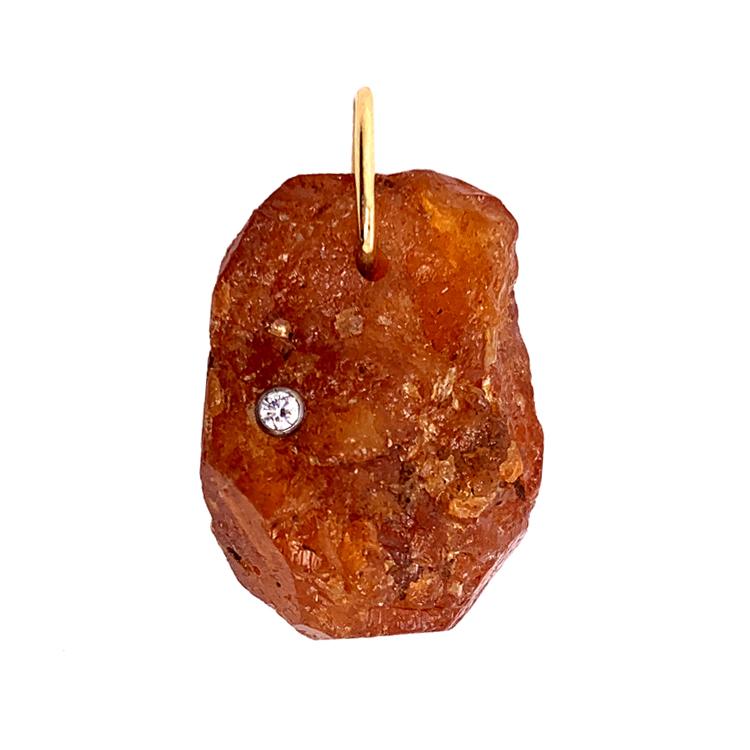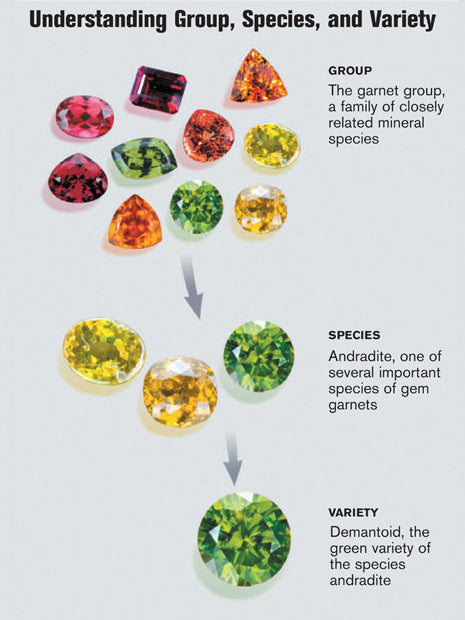|Shop All Birthstone Jewelry By Month|
"As a glowing garnet sun sets on a calm sparkling seaYour love songs will echo eternally."--from Jan Allison's poem, 'Stanzas of Love'
"I hate my birthstone."
Oh, really? What month?
"January. Blechhhh. It's just ugly."
The thing about garnets is...unless you hate every color of the spectrum, there is a beautiful garnet waiting for you.
Garnets Come in Many Different Colors
First off, you definitely do not want to be shopping for birthstones at a chain store, or at an independent store that carries items that look like they could be in a chain store. Those birthstones are "gems in name only." While they might possess the actual chemical, crystal, and optical properties to have them qualify as whatever gem you're talking about, they don't generally possess the beauty that the gem in question should exhibit. The same beauty that has inspired people for millennia.
So, no...NOT all garnets are a poopy brownish red color. Rhodolites range from stunning deep pink to purplish red...candy-like colors that are definitely drool-worthy.

 Not all Garnets are Red
Not all Garnets are Red
Spessartine garnets can be brilliant, vivid orange. Topazolite garnets are yellow, and hessonites can be, as well. There are garnets that change colors depending upon the lighting in which they are viewed! Some of the most prized change from blue-green to purple, which are a solid mix of pyrope and spessartine.
Tsavorite garnets rival emeralds in the purity and shade of green. In fact, when I am asked my opinion on emerald engagement rings, and it is clear that the future ring-wearer is set on having a gem that particular green color, I always recommend tsavorite garnet: generally, the color is better, there is a lack of imperfections inside the stone, the cutting is brilliant, and the durability is greater. What's not to love?
 And remember that poopy brownish-red garnet mentioned at the beginning of this post? Well, I know what those are. They are bad examples of almandine, which is actually a lovely gem, when selected with care and without over-frugality. Almandines have been used as gemstones since the Bronze Age, and were the most commonly-used gem for centuries. Originally called "carbuncles" because they exhibit an internal red glow (like the burning coals after which they were named), gem-quality almandines are quite captivating.
And remember that poopy brownish-red garnet mentioned at the beginning of this post? Well, I know what those are. They are bad examples of almandine, which is actually a lovely gem, when selected with care and without over-frugality. Almandines have been used as gemstones since the Bronze Age, and were the most commonly-used gem for centuries. Originally called "carbuncles" because they exhibit an internal red glow (like the burning coals after which they were named), gem-quality almandines are quite captivating.The Meaning of Garnets
.jpg)
 For those of you who have an interest mineralogy, know that you could spend a great deal of time studying garnets and barely scratch the surface. You see, unlike any other widely-known gemstone, garnets are actually a very complex "family" of gems. There are six naturally-occurring end members that are more common: almandine, pyrope, spessartine, andradite, grossular, and uvarovite. In addition to each of those existing in a pure or nearly-pure form, there are "mixtures" of the first three and of the second three. For instance, rhodolite is actually a solid-state mix of pyrope and almandine. In addition to those six end-members of the garnet group, and all the mixtures and color-varieties of them, there are even more garnets that are lesser known.
For those of you who have an interest mineralogy, know that you could spend a great deal of time studying garnets and barely scratch the surface. You see, unlike any other widely-known gemstone, garnets are actually a very complex "family" of gems. There are six naturally-occurring end members that are more common: almandine, pyrope, spessartine, andradite, grossular, and uvarovite. In addition to each of those existing in a pure or nearly-pure form, there are "mixtures" of the first three and of the second three. For instance, rhodolite is actually a solid-state mix of pyrope and almandine. In addition to those six end-members of the garnet group, and all the mixtures and color-varieties of them, there are even more garnets that are lesser known.So, January babies, take heart! While it might seem that those born the month before yours are lucky to have four official birthstones, and you only have one...you have a variety no other month knows, all wrapped up in that one family of gems we simply call "garnet."




Leave a comment